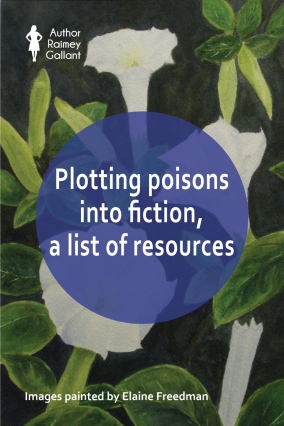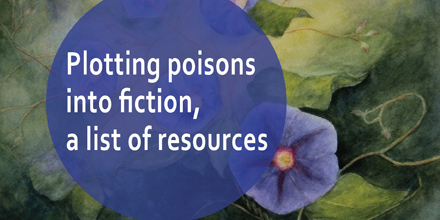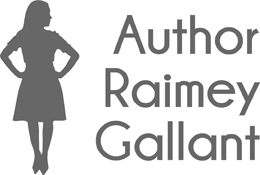
I had the privilege recently of attending a Crime Writers of Canada webinar called Plots, Plants and Poisons, led by Elaine Freedman. I enjoyed the webinar so much, I asked Elaine if she would share her resource list on the literary applications of poisons with my readers. She agreed (yea!) and her annotated list of books and websites follows. I’d like to stress that I’m posting this solely as a resource for writers who are or would like to write about poisons.
Elaine has been a fan of crime fiction since she started reading her grandmother’s Alfred Hitchcock magazines as a little girl. A freelance editor for more than thirty years, she especially enjoys editing crime fiction and has judged for both the Crime Writers of Canada Awards and the Bony Blithe Light Mystery Awards. She has delivered talks on poisonous plants and mushrooms to the Bloody Words mystery conference, the Bony Blithe mini-con, Sisters in Crime Toronto, and the Crime Writers of Canada. Elaine has been painting watercolors for more than ten years, and she recently used her paintings of poisonous flowers to produce the My Little Poison Garden greeting card collection (image and details below the list.)
Books:
Poison: Deadly Deeds, Perilous Professions, and Murderous Medicines by Sarah Albee
Overview: actually a book for younger readers, but excellent history of poisoning with good notes on specific poisons. The book, “traces the role that poisons have played in history from antiquity to the present.”
Plants That Kill: A Natural History of the World’s Most Poisonous Plants by Elizabeth A. Dauncey and Sonny Larsson
Overview: one of the more technical books, ordered by body system affected, with good explanations and illustrations. Includes information on what can mitigate effects of poisons/save someone’s life.
A is for Arsenic: The Poisons of Agatha Christie by Kathryn Harkup
Overview: excellent book on poisons used by Christie. “Each chapter takes a different novel and investigates the poison used by the murderer.”
Book of Poisons: A Guide for Writers by Serita Stevens and Anne Bannon
Overview: this is from the Writer’s Digest books Howdunnit series, and it’s the best resource for crime on poisoning. Includes toxicity ratings, effects, and time until symptoms or death. It’s an update to their earlier book Deadly Doses: A Writer’s Guide to Poisons.
Wicked Plants: The Weed That Killed Lincoln’s Mother & Other Botanical Atrocities by Amy Stewart
Overview: “Drawing on history, medicine, science, and legend, this compendium of bloodcurdling botany will entertain, alarm, and enlighten even the most intrepid gardeners and nature lovers.” Good anecdotes and descriptions of effects.
Dangerous Garden : The Quest for Plants to Change our Lives by David Stuart
Overview: well-written with good historical references.
North American Guide to Common Poisonous Plants and Mushrooms by Nancy J. Turner and Patrick von Aderkas
Overview: an excellent field guide with photos, descriptions, occurrence, toxicity, and notes on wild plants and cultivars. Includes special appendices for honey and milk poisons, and medicinal herbs.
Handbook of Poisonous and Injurious Plants (second edition) by Lewis S. Nelson, M.D., Richard D. Shih, M.D., and Michael J. Balick, Ph.D.
Overview: 2007 handbook by physicians and a botanist with excellent information on management of poisoning and how specific plants poison.
 Web Resources:
Web Resources:
The FDA’s searchable Poisonous Plant Database
Wikipedia page for List of Poisonous Plants Wikipedia page
This post is part of the #AuthorToolboxBlogHop. So many great blogs to keep hopping through. Click here to join the hop and to see what other writing tips you can glean from this month’s edition.
Do you think you’ll ever incorporate poisons into a story? Have you done so already? Any poisons in particular you’re curious about? Chat with me in the comments. If you’re interested in purchasing Elaine’s My Little Poison Garden greeting card collection (image below), you can email her at elaine@freedmanandsister.com.



It’s amazing how many flowers are deadly poisons!
LikeLiked by 1 person
Learning about this so far has been an eye opener for me!
LikeLiked by 1 person
I don’t suppose there’s a link to the webinar? I’d love to watch it. I just included a poison plant in my latest WIP!
LikeLiked by 1 person
Hi Jacqui! I’ve checked all over the Crime Writers of Canada website, and I think their intention was to make the webinar recording available to members only. Sorry! I think the list is a great place to get started, though. Good luck!
LikeLike
Thank you!
I don’t have any stories yet with poisons but the resource material will come in handy one day.
LikeLiked by 1 person
That’s how I feel! 🙂
LikeLiked by 1 person
I love this sort of thing, bookmarking for later 😀 Plenty of ideas for poisons for my fantasy stories! (I’m not a crazy person, promise!)
LikeLiked by 1 person
We won’t ask to look at one another’s search histories. 😉
LikeLiked by 1 person
😂
LikeLiked by 1 person
That’s a lot of toxins one could make!
LikeLiked by 1 person
Indeed!
LikeLike
Great info and resources. Thanks for sharing.
LikeLiked by 1 person
My pleasure, Juneta!
LikeLike
Oh thank you for this. I have a story idea with a Black Widow so this will come in handy if I ever write it.
LikeLiked by 1 person
That’s exciting. I’m happy if the list helps you. 🙂
LikeLike
Very handy!
LikeLiked by 1 person
Thanks so much!
LikeLiked by 1 person
Great post topic. Plants are an excellent writing detail to add to a story. Especially thinking about today and how people use homeopathic remedies to heal and ward off illness.
LikeLiked by 1 person
Absolutely. OMG, there’s totally a plot in there!
LikeLike
Ooooh! This will come in handy for something I’ve been working on. Thanks for sharing!
LikeLiked by 1 person
I’m so happy you’ll be able to make use of it!
LikeLiked by 1 person
This is a great list! I love mysteries and am planning to try my hand at one on my next manuscript. This will be helpful. Thanks for sharing! 🙂
LikeLiked by 1 person
That’s exciting! Good luck with it, Charity!
LikeLiked by 1 person
Thanks for my new reading list. hehehe
Anna from elements of emaginette
LikeLiked by 1 person
I thought this might be useful for you. 🙂
LikeLiked by 1 person
I love studying poisonous plants. My protagonist dabbles in herbs and medicinal flowers, which, in the wrong hands, could be used for nefarious purposes. Thanks for the resource links – I’m bookmarking them.
LikeLiked by 1 person
I love that as a character hobby. 🙂
LikeLike
Great resources. I have a well-used herbal medicines book and nearly everything in it can be a poison also. The world is a dangerous place. thanks for sharing.
LikeLiked by 1 person
It so totally is!
LikeLike
Let’s hope a murderer doesn’t get their hands on this list! LOL I love finding resources like this, but for my genre I veer towards psychology books. Thanks for sharing! I may need one of these someday…for a writing project, just to clarify. 🙂
LikeLiked by 2 people
Agreed. I was tentative about posting it, but the books are out there!
LikeLike
Actually, after posting that I realized these books would be enormously helpful to hikers and those that spend a lot of time in the wilderness.
LikeLiked by 2 people
NOTHING to see here, NSA agents, I’m totally not planning on poisoning anyone at all with all these books about poison, haha, nope. Don’t worry about my search history whatsoever! Haha. We writers end up with the most incriminating Google searches ever.
LikeLiked by 1 person
I only research raindrops and roses. 😉
LikeLiked by 1 person
We write about so many different things.
Things like this will help when we need to add some reality to the scene. It’ll also help if and when we need to quiet that ‘special someone’. (kidding!!!)
LikeLiked by 1 person
So many books about plants, so little time!
LikeLiked by 1 person
A very thorough and impressive list.
It’s interesting how often parts of something are poisonous, or are poisonous if not handled properly. I remember reading somewhere that many of our modern foods have poisonous attributes/components, and many times the line between medicine and poison is in the quantity and frequency of use.
LikeLiked by 1 person
That is incredibly interesting!
LikeLiked by 1 person
Thanks for the list, Raimey. I especially like the idea of the Christie one.
LikeLiked by 1 person
Me, too!
LikeLiked by 1 person
Fascinating list. Thank you for sharing it. I’m curious to read Poison: Deadly Deeds, Perilous Professions, and Murderous Medicines by Sarah Albee because of the interesting title of the book. Thanks for hosting this blog hop.
LikeLiked by 1 person
My pleasure!
LikeLike
Having a dog that eats most anything, my wife and I keep a list of houseplants to avoid. I was amazed at some on the list. Interesting post.
LikeLiked by 1 person
I remember getting rid of a few plants when my family adopted kittens.
LikeLike
At some stage, I have considered incorporating poisons into a story.
Thanks for the list of books. Lots to choose from.
LikeLiked by 1 person
I know! Where to start, lol. 🙂
LikeLike
Wow, I love the sound of this webinar. Fascinating stuff! 🙂
LikeLiked by 1 person
It really was, Yvette. 🙂
LikeLike
Oh, now y’all need to think outside the box. I’ve been running outside methods of “dispatch” in Gambits. Champagne corks, hickeys…poison, although a staple of all the true detective murder porn on TV, is so “Murder She Wrote.” I mean all the poison and adultery and bad redneck grammar and procedural is already out there just waiting to be transcribed. However any research resource is a good one, and I appreciate that, but you can’t beat a resource for strange facts. An angry bride, a jealous bridegroom, a random death by champagne cork or another champagne poisoning? I’m telling you, stretch. Like Murder She Wrote. They had us believing Mendocino California was Cabot Cove, Maine. It’s all in the redirect and red herrings…Thanks!
LikeLike
RE-posted on twitter @trefology
LikeLiked by 1 person
This is a great resource. Thank you!
LikeLiked by 1 person
Yea! I’m happy you think so.
LikeLike
What an excellent and informative post, Raimey! Thank you sooo much for sharing these resources with your readers. I’ve read every Agatha Christie book and my mother loved the Alfred Hitchcock magazine stories. They were too scary for me. All best to you!
LikeLiked by 1 person
I’ve only read a few Agatha Christie, but I have plans to read more!
LikeLike
What a great resource! I am making this post for writing and reading, I read a lot of historical (nearly wrote hysterical!) mysteries and something wonder if the info is accurate, so this will come in very handy. Thanks, Raimey.
LikeLiked by 1 person
My pleasure. 🙂 Hysterical should totally be a genre category. 🙂
LikeLike
Great resources! Thank you for sharing.
LikeLiked by 1 person
My pleasure!
LikeLike
This is a great list. I’ve read Wicked Plants by Amy Stewart and thoroughly enjoyed it. Thank you for coming by https://experiencewriting.com/. Using jequirity beans in my poem today got me interested in using them as a poison in a story. 😉
LikeLiked by 1 person
I had never heard of jequirity beans before. They would make a very pretty poison. 😉
LikeLike
This is such a great resource! I just poisoned someone in my latest book and this list would have been really useful when I was at the plotting stage. I may just have to poison someone else 🙂
LikeLiked by 1 person
I’m so happy you find it useful, Ellen. 🙂
LikeLike
This is an excellent resource for anyone writing a mystery/murder/suspense novel which includes poisoning. 🙂
LikeLiked by 1 person
Why thank you, Kevin. 🙂
LikeLiked by 1 person